If you thought big dogs were only about size, think again. Rare giant dog breeds are a majestic blend of impressive stature, gentle temperament, and striking rarity that makes them unforgettable. These aren’t the breeds you see at every dog park—they’re unique, captivating, and awe-inspiring.
From enormous paws to warm eyes, rare giant dogs are living proof that greatness comes in both size and spirit. But their rarity means they aren’t just about appearances—they have fascinating histories, unique temperaments, and care requirements that make them a true commitment and joy for dedicated owners.
We’ll introduce you to some of the biggest dog breeds you may never have encountered, sharing what makes them special and why dog lovers can’t stop marveling at them.
Prepare to be enchanted, amazed, and maybe even inspired to welcome one of these gentle giants into your life—they’re truly dogs you need to see to believe.
Fact: Some giant breeds nearly disappeared during the early 1900s due to war and food shortages. Thanks to dedicated breeders, these gentle giants survived—and today, many remain so rare that only a few hundred puppies are registered worldwide each year.
Rare Giant Dog Breeds You Need To See Now
1. Irish Wolfhound

If dog breeds were celebrities, the Irish Wolfhound would be the calm, wise giant with a heart of gold—basically the Gandalf of the canine world. Standing tall enough to make you question your own height, these majestic pups are one of the tallest dog breeds on the planet.
But don’t let their towering presence scare you—they’re more likely to snuggle than to intimidate. These furry giants date back to ancient times when they were the ultimate multitaskers: hunting wolves, guarding people and livestock, and even joining humans in battle.

Fast forward to today, and their role has evolved into being devoted, calm, and surprisingly gentle companions. Think of them as your personal four-legged bodyguard who’s more into belly rubs than brawls.
Irish Wolfhounds are a bit shy around strangers. You won’t hear them barking at every passerby—they prefer to give a dignified nod from across the room. Bonus: they’re not major droolers, so you don’t have to carry a mop around like some other giant breeds.
When it comes to other animals, their strong hunting instincts can be a little tricky. Smaller pets might need to stay out of reach until a careful introduction is made. But once they get the hang of it, they can happily coexist with other dogs, becoming part of the household “pack” in no time.
Kids? These gentle giants are surprisingly patient. That said, toddlers might mistake them for a moving mountain. Supervised play is key—because while they won’t mean any harm, an accidental tail wag could send your little one flying.
And a quick note for the allergy-conscious: Irish Wolfhounds aren’t hypoallergenic. But compared to other large breeds, their shedding is relatively modest, so your vacuum won’t need a vacation plan.
If you’ve got room in your home—and your heart—this serene, towering companion might just be the ultimate “gentle giant” you never knew you needed. Just be ready for long legs, a soft heart, and the occasional accidental furniture tap.
2. Kangal
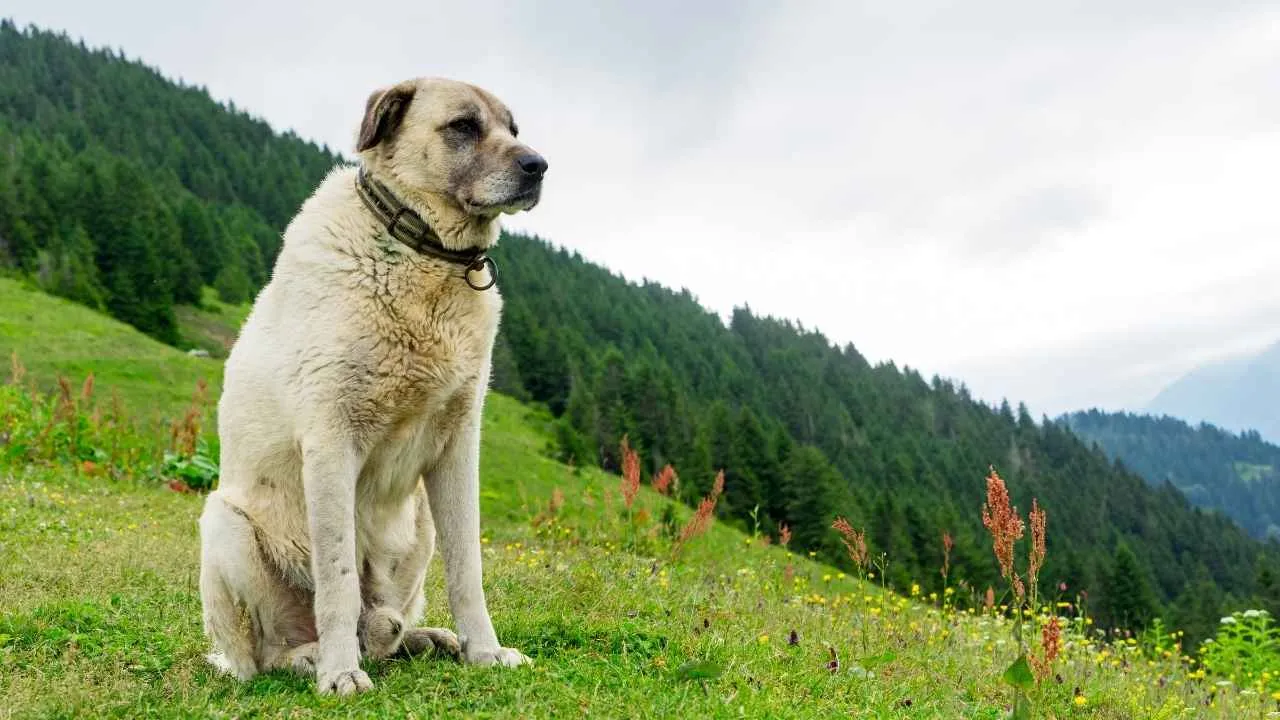
Meet the Kangal: part gentle giant, part superhero. This breed is like the Swiss army knife of dogs—powerful, protective, and calm, but with the brains to make its own decisions when duty calls.
With a Kangal around, burglars might think twice, and your livestock—or even your household—has a four-legged security system with a serious “do not mess” vibe. Kangals are naturally aloof around strangers, which means they’ll calmly observe first before deciding if action is needed.
These big breeds aren’t the type to bark at every delivery person—they’re more like stoic gatekeepers surveying their kingdom. But make no mistake: if they sense danger, they are fearless.
As pets, Kangals require a lot of responsibility. They need consistent socialization with people, children, other pets, and even livestock if you’ve got them. Why? Because with a dog this size, mistakes aren’t just embarrassing—they could be dangerous. Think of it as training a living tank with a heart full of loyalty.
Purina noted Kangals are intelligent, independent thinkers. They don’t need constant guidance; in fact, they’re perfectly capable of making their own decisions if they believe it’s necessary. This makes them brilliant protectors—but also a challenge for first-time dog owners.
Training a Kangal requires patience, consistency, and confidence. This is not a “pick up a puppy and wing it” breed.
In short, the Kangal is the ultimate guardian: powerful, thoughtful, and loyal to the bone. But only those willing to put in the time, energy, and respect for their independence should take on this magnificent, colossal companion.
3. Leonberger

If a dog could wear a crown and a cape, the Leonberger would be first in line. With a mane that practically screams “I rule this household,” these giant fluffballs are part gentle giant, part showstopper.
Named after the German town of Leonberg, these dogs were originally bred to be versatile family companions—guardians, water rescuers, and all-around noble pals. Basically, they were designed to do everything except pay your bills.
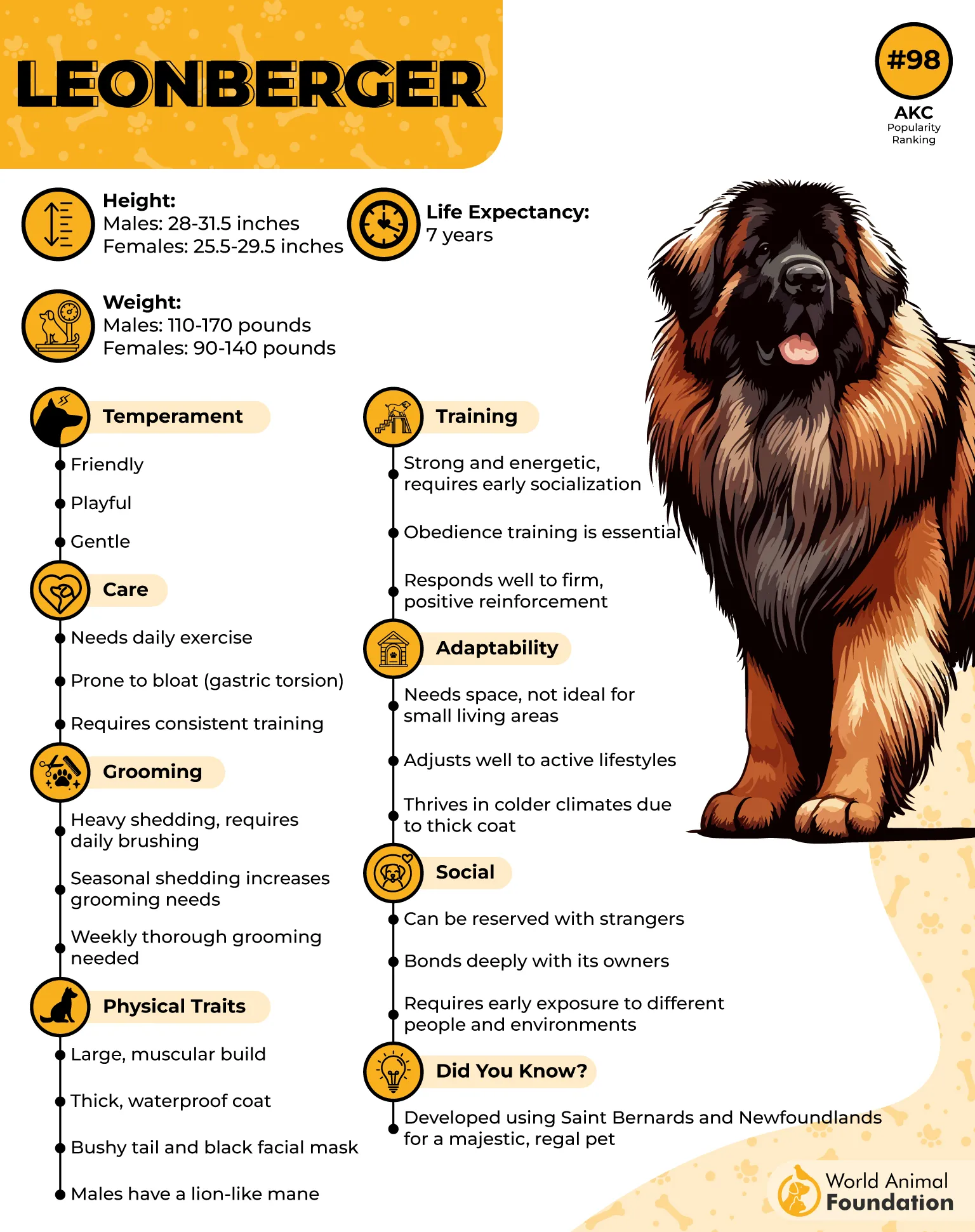
Despite their size, Leonbergers are famously sweet and calm. They are the type of dog that can lounge with you on the couch, tip over an ottoman accidentally with a wag of their tail, and still make you forgive them instantly with those soulful, puppy-dog eyes.
Kids? They’re incredibly patient. Think of them as the big, furry babysitter who never complains—just sheds a lot. Leonbergers are friendly and social, making them excellent family dogs, but their sheer size means supervision around toddlers is a must.
A 100-pound dog trying to curl up next to a three-year-old might result in a “tiny human vs. giant fluff” scenario if you’re not careful.
Training them is usually straightforward because they are intelligent and eager to please. But beware: their fluffy lion-like coat is not a “wash-and-go” situation. Grooming is a regular commitment—think of it as a spa day, every day.
4. Tibetan Mastiff
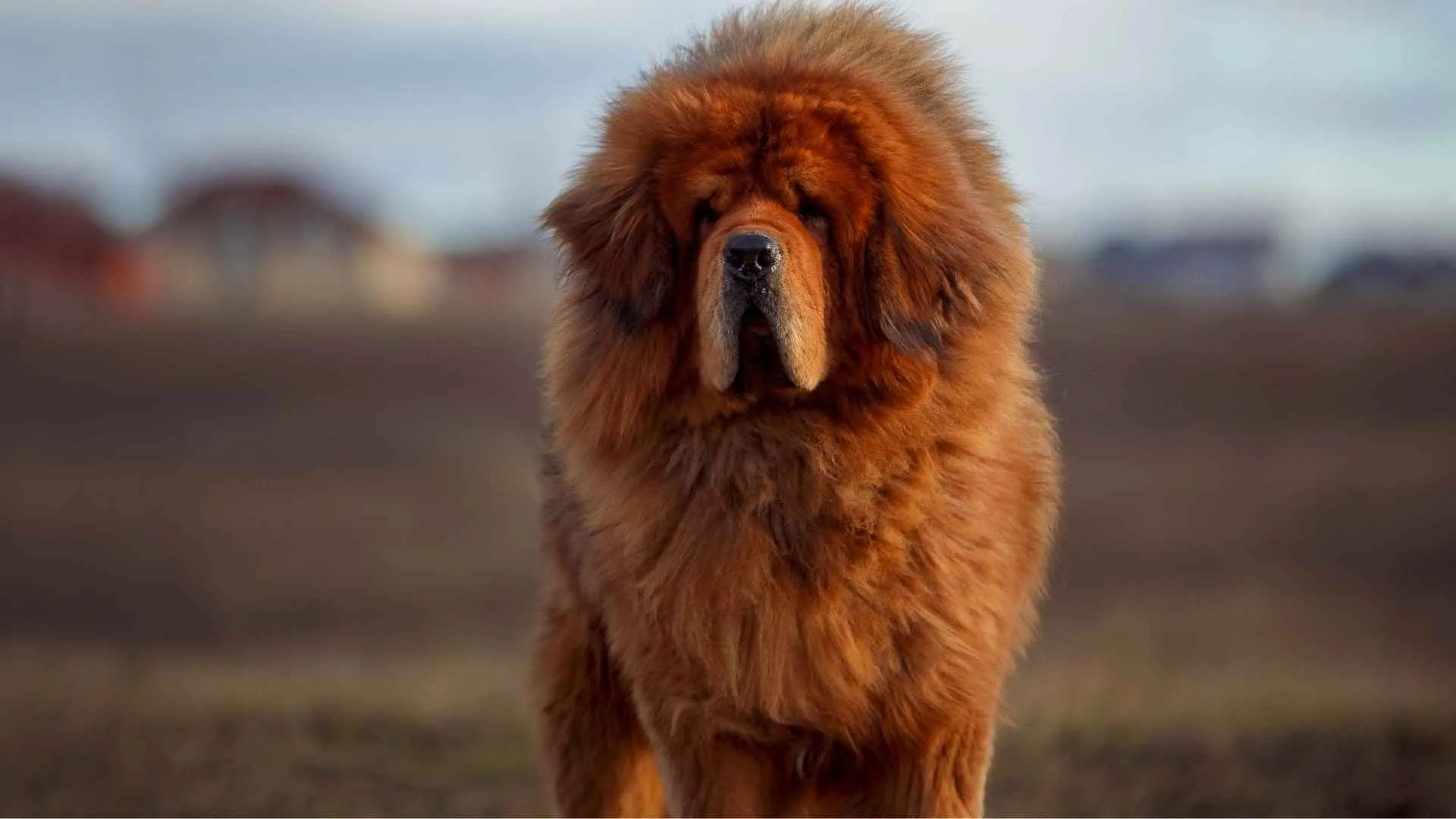
Meet the Tibetan Mastiff: a dog so majestic it could practically star in a fantasy movie. Centuries ago, these impressive pups roamed the rugged Himalayan terrain, guarding livestock and families against predators with the courage of a tiny lion in a massive, furry body.
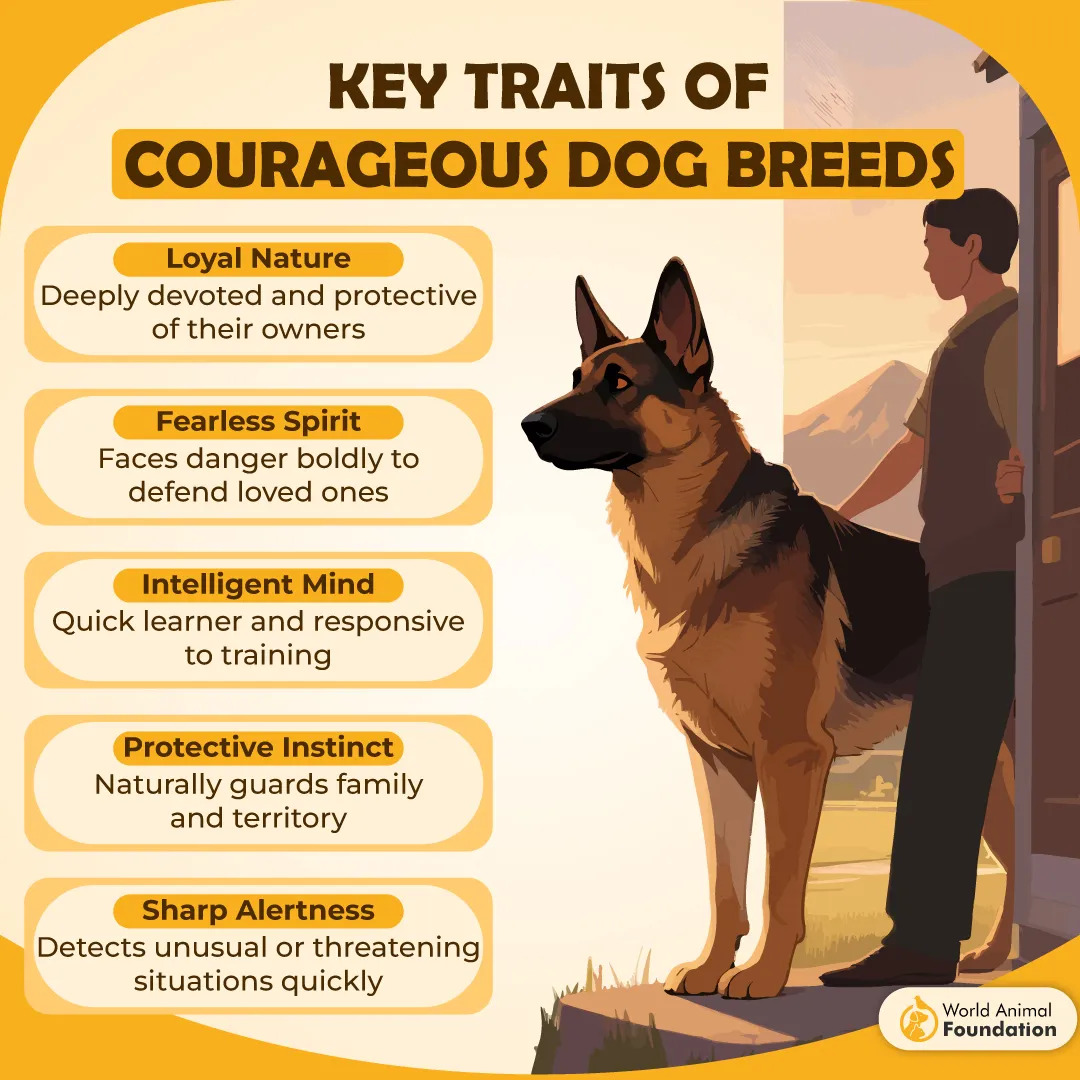
Fast forward to today, and they’ve traded mountain passes for suburban backyards—though their guardian instincts remain just as strong. Fun fact: they’re so rare and luxurious that they’ve earned a spot as one of the most expensive dog breeds in the world.
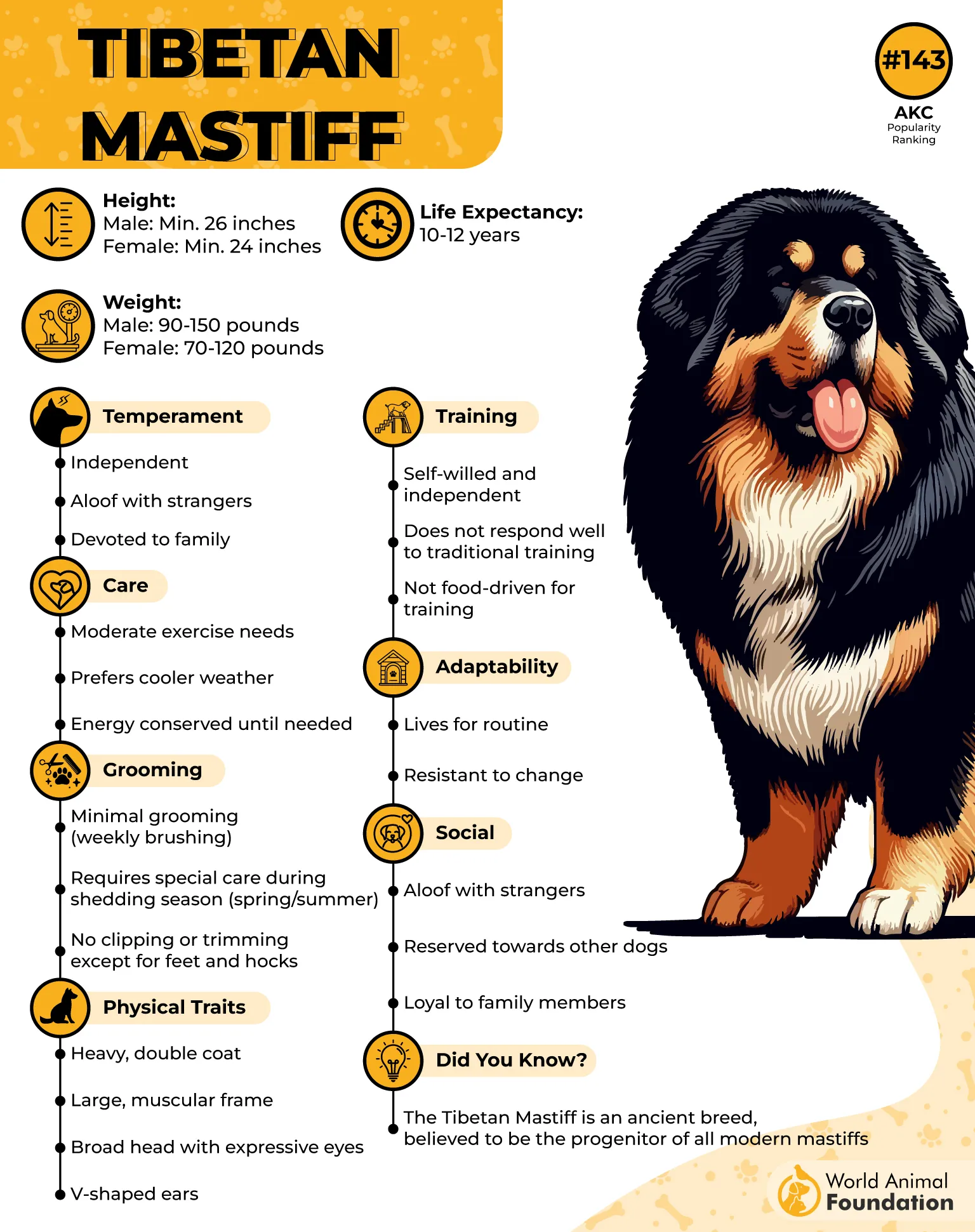
Don’t let their enormous size fool you—Tibetan Mastiffs have hearts as big as their paws. They are fiercely loyal to their families and form deep bonds with their humans, often attaching themselves to one or two special people in the household.
Stranger alert? Their fiercely protective instincts kick in immediately, but this isn’t about aggression—it’s just them taking their “family watchdog” duties very seriously. Think of them as a soft, fluffy security system with an occasional dramatic stare.
Because of their ancestral guarding role, Tibetan Mastiffs are always on alert, and their independent thinking makes them unique. They don’t blindly follow commands—they assess situations and act accordingly, which can be a little intimidating if you’re used to more obedient breeds.
But for experienced dog lovers who understand their strong instincts and respect their space, they are unmatched companions: loyal, protective, and endlessly majestic.
5. Caucasian Shepherd Dog

If you’re looking for a dog with presence, the Caucasian Shepherd—also known as the Caucasian Ovcharka, Caucasian Mountain Dog, or the delightfully intimidating “Russian Bear”—is basically a living fortress on four legs.
These massive pups hail from the rugged Caucasus Mountains of Eastern Europe, where they spent centuries guarding livestock and property from predators. Basically, they were born to say, “Back off, this is my territory.”
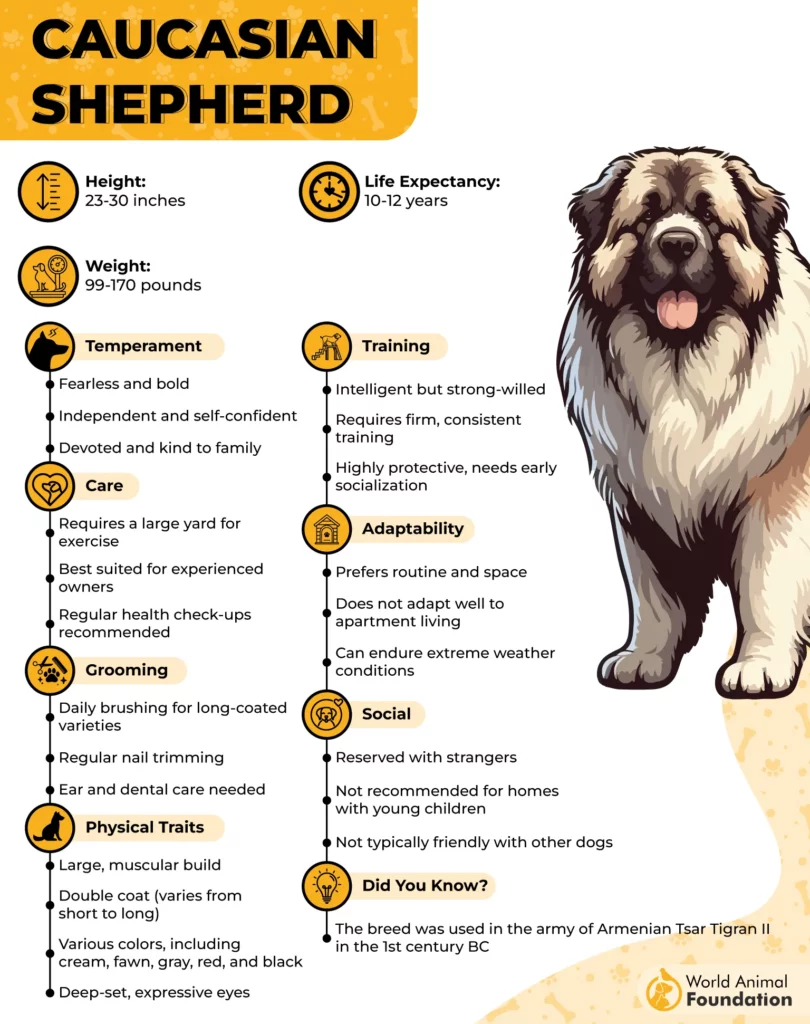
Caucasian Shepherds are incredibly independent and alert, making them excellent working dogs. But here’s the catch: they aren’t your average lapdog. They’re not exactly “first-time owner friendly.”
Bringing home a tiny puppy might seem harmless, but that little fluff ball will grow into a giant, commanding presence that requires serious training, space, and respect. Think of it as adopting a small bear that will one day fit in your living room—if your living room is big enough.
PetMD noted obedience training is a must, and positive reinforcement is the way to go. These dogs are smart, but they aren’t known for their patience, especially with small, hyper children. So if you’ve got toddlers bouncing around, careful supervision is a must.
Caucasian Shepherd Dog is a powerhouse of loyalty, strength, and sheer fluff. For the right home, they’re affectionate and protective beyond measure—but also a dog that demands respect, room to roam, and someone confident enough to handle all that bear-sized personality.
6. Dogue de Bordeaux

Say bonjour to the Dogue de Bordeaux, the French heavyweight of the dog world! With a face full of wrinkles, a chest that could double as a coffee table, and muscles for days, this breed looks intimidating—but don’t let that fool you.
Beneath all that power beats the heart of a loyal, affectionate, and sometimes hilariously goofy companion. Originally bred in France for guarding estates and pulling carts, the Dogue de Bordeaux is a true “working dog with style.”
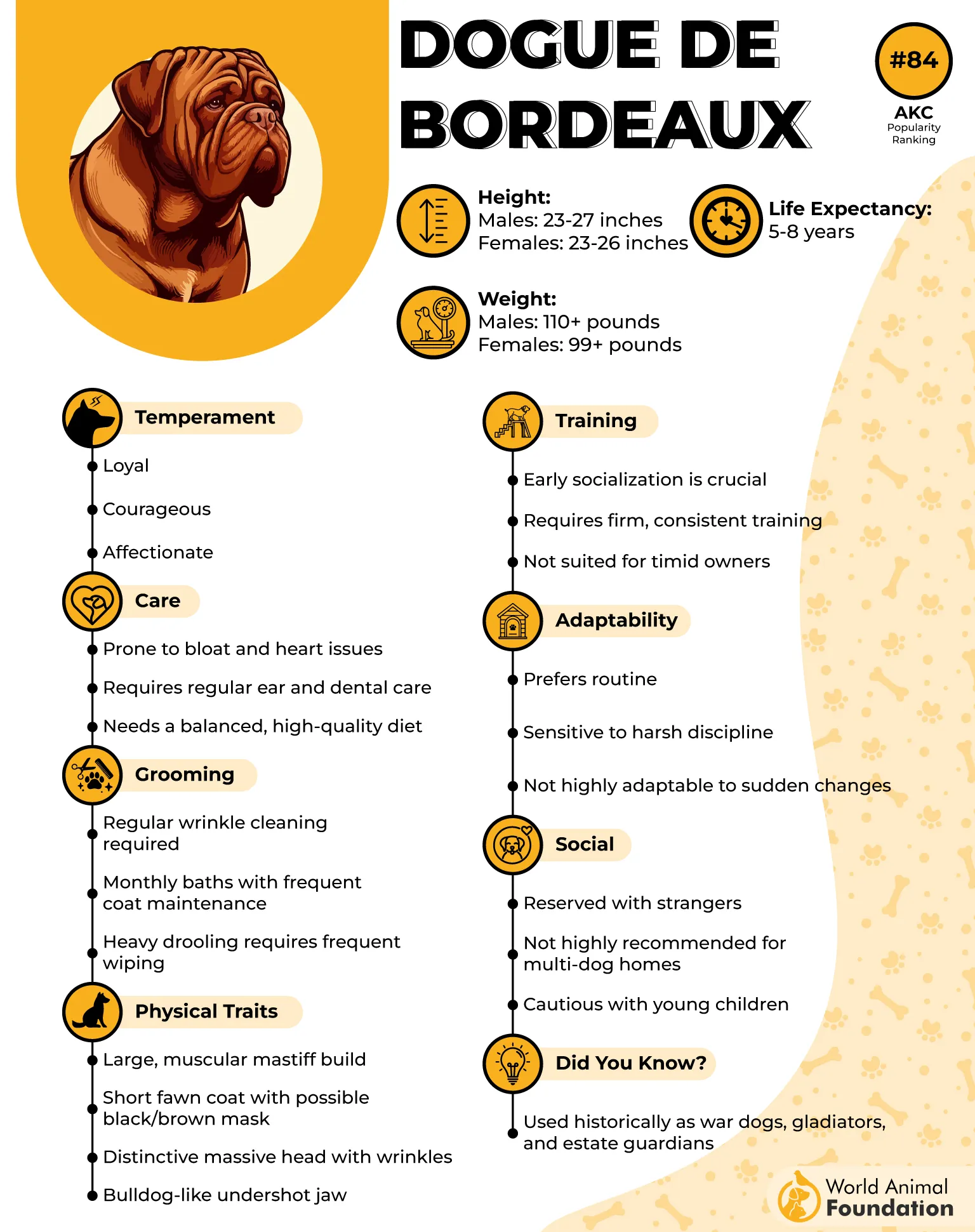
They are courageous, protective, and unflinchingly loyal to their family. Stranger at the door? They’ll assess, watch, and protect—but usually with a calm, deliberate demeanor rather than jumping straight into action.
Dogue de Bordeaux are incredibly people-oriented. They thrive on affection and are surprisingly gentle with children, though their sheer size means supervision is always a good idea. Imagine a lovable, wrinkly sumo wrestler doing laps around your living room—that’s playtime with this breed.
Training this powerhouse requires consistency and patience. They are intelligent but can be stubborn, so positive reinforcement works best. And yes, their drool is legendary—think Niagara Falls meets velvet. If you’re not prepared for a little slobber, this might not be your breed.
Dogue de Bordeaux is a perfect mix of muscle and heart: protective, loyal, and absolutely endearing once you get past the wrinkles and occasional snore. For anyone ready to welcome a massive French gentleman into their home, this breed delivers charm, loyalty, and a fair share of slobbery kisses.
7. Boerboel
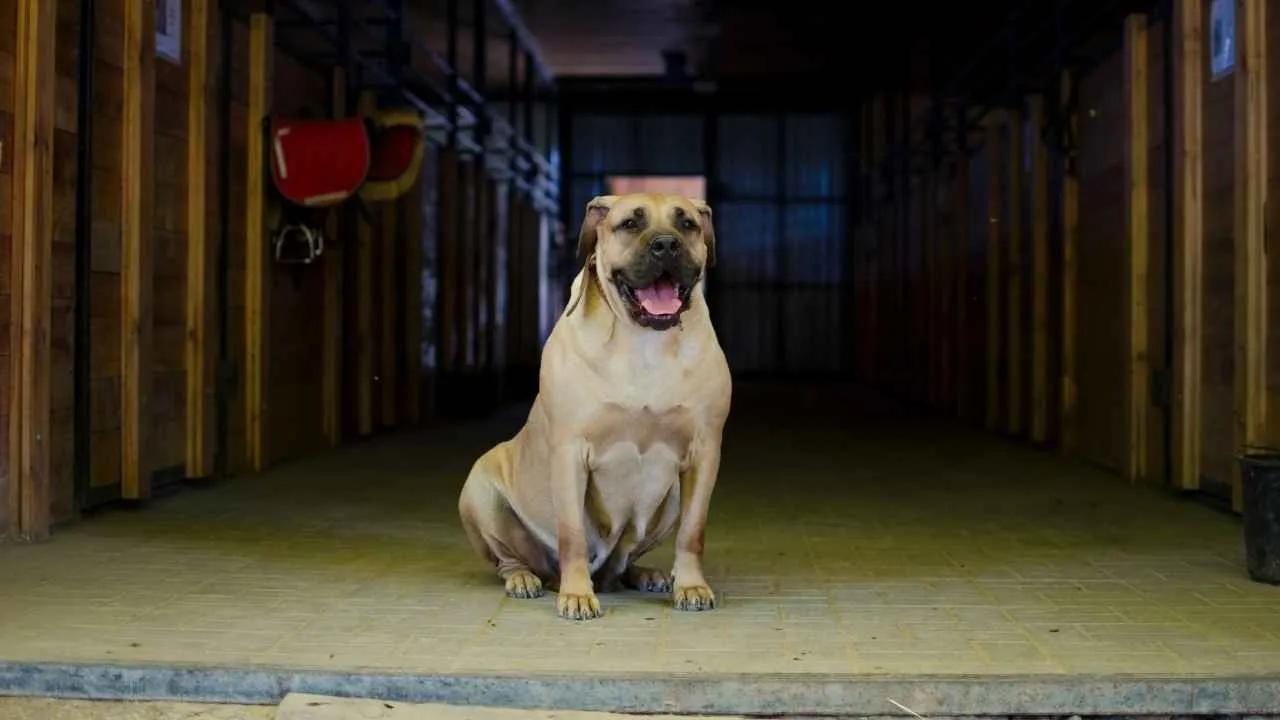
Meet the Boerboel, South Africa’s answer to “big, loyal, and built like a tank.” This giant breed was originally developed on farms to protect homesteads from predators, so think of them as a personal guard dog with paws—one that’s affectionate enough to nap beside you afterward.
Boerboels are powerful, confident, and incredibly protective of their families. They’re not barky for no reason, but when they sense danger, they’ll step up without hesitation. Essentially, they’re the perfect combination of calm guardian and devoted companion.
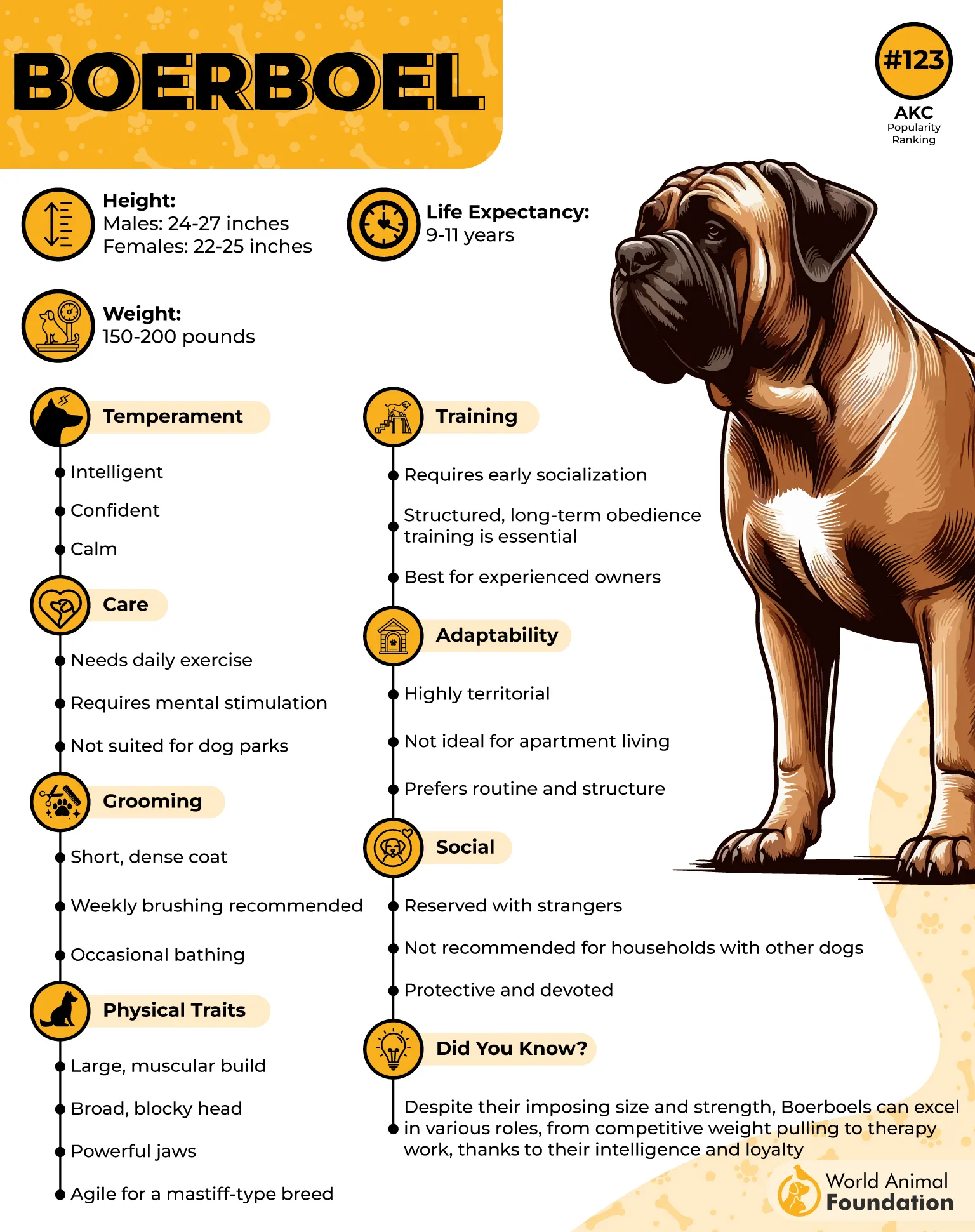
Despite their size, Boerboels have a gentle nature with their humans. They bond strongly with their families, including children, and often have a surprisingly gentle touch—though supervision is always recommended due to their sheer weight and strength.
Imagine a 150-pound cuddle buddy who occasionally forgets their own size! Training a Boerboel requires consistency, patience, and clear leadership.
These dogs are intelligent and independent thinkers, so a confident owner who can set boundaries is key. But once trained, they’re loyal, obedient, and genuinely protective—a true family anchor.
Boerboel is a muscular, majestic, and loving companion: a farm-ready guardian that’s equally at home as a devoted family member. Just be prepared for big paws, a bigger heart, and a presence that can’t be ignored.
Conclusion
Rare giant dog breeds, from English Mastiffs and Great Danes to Saint Bernards, Neapolitan Mastiffs, French Mastiffs, Black Russian Terrier, Great Pyrenees, and athletic dog breeds like the Carolina Dog and Swedish Vallhund, are bred to hunt, guard, or simply be great companions for their loved ones. With their large bones, thick double coats, or short coats, they need enough room, regular exercise, mental exercise, and sometimes more food to thrive.
Early training and socialization help even gentle-natured giants like Finnish Spitz, Bedlington Terrier, Cesky Terrier, English Foxhound, and Norwegian Lundehund coexist peacefully with pet parents and families. Some rare breeds, like the West African Sighthound or Norwegian Lundehund with six toes, bring unique traits and charm, while others excel in hunting small or large game. Laid-back yet loyal, these rare breeds offer impressive life expectancy and unforgettable companionship, proving that giant dogs can be both majestic and deeply loved.


